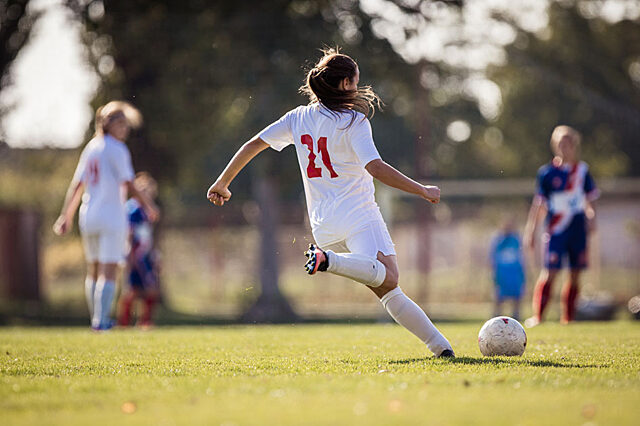Sports-related Concussions in Teenagers
A concussion is a form of mild traumatic brain injury that leads to a transient disturbance in brain function. The majority of concussions occur from sports-related activities, although they can be caused by other mechanisms.

Concussions are a form of mild traumatic brain injury that leads to a transient disturbance in brain function. The majority of concussions occur from sports-related activities, although they can be caused by other mechanisms, such as a motor vehicle crash. Most sports involve some risk of concussion, which typically occurs when one athlete’s head directly contacts another athlete or some part of the field or court. High-risk sports for females include basketball, ice hockey and soccer. The greatest risk for concussions in males participating in sports occur in football, ice hockey and wrestling.
How are concussions identified?
It is important for coaches, athletic trainers, team physicians and even spectators to be on the lookout for concussed athletes. Generally, identifying a concussion will be obvious when two players collide or an athlete falls hard on a court or field. However, sometimes the injury will be more subtle, which is why the coaching staff and sports medicine team must pay close attention to athletes during practice and games.
Unlike most injuries that are easy to see, such as an ankle sprain or a shoulder dislocation, concussions can be harder to identify and diagnose on the sideline. Symptoms vary between athletes, and even individual athletes can present differently between multiple concussions. Athletes most commonly report a headache, but may also have disturbances to balance, gait and vision, with neck pain and vomiting. They may also have cognitive dysfunction, including amnesia, confusion, mental fogginess or poor concentration.
What happens after a concussion is identified?
Athletic trainers and physicians have specific cognitive and physical exam tests they perform to evaluate for a concussion. These tests can be done on the sidelines, in the office and on subsequent days. When a concussion is confirmed or suspected, the athlete should be removed from play until they can be properly evaluated in a clinical setting by a physician trained in concussion management.
A monitored protocol of progression from complete rest to relative rest, and the ability to tolerate school attendance must be confirmed before the athlete can be considered for returning to playing sports. Progression for return to sport generally includes some form of noncontact practice, followed by contact practice, before returning to a full game. If the athlete’s symptoms return or worsen during any step of the protocol, they should rest and allow their brain to continue to heal before progressing further. Most athletes are able to return to sport within two to four weeks.
Visit UFHealthJax.org/sports-medicine to learn more about our services.
Should you or a family member experience a severe concussion or sports-related injury, please do not delay seeking emergency care. UF Health Jacksonville stands ready to handle emergencies 24/7, and is staffed by highly qualified, board-certified emergency medicine physicians.